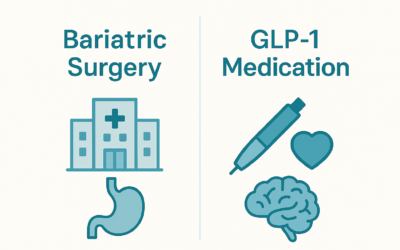How often do you hear people talk about “health” and “wellness,” or, even more commonly, “health and wellness”? These words used to mean something, but today they’ve become little more than soft buzzwords, used to talk about treating symptoms instead of real wellbeing. But real health is more than just treating symptoms or managing chronic conditions. It’s a lot more than just ticking off boxes at your annual checkup, or reaching the magic number on the scale.
Real health — whole-person health— requires us to look at the entire person; to acknowledge that there’s more to us than our lab results or lists of symptoms, and that every part of us — body, mind, and spirit too — are deeply interconnected. We call this whole-person health “holistic health,” and when we approach health and wellbeing holistically, we’re not just treating what’s wrong at surface level. We’re creating an environment where we can truly thrive. Doing so means integrating strategies and practices that go beyond the nuts-and-bolts approach of conventional medicine — creating what we call integrative medicine or integrative health care.
What are integrative health care practices, and how do they enhance your wellbeing?
Integrative health care practices blend conventional medicine with complementary therapies. These often include things like nutritional counseling, massage therapy, and acupuncture. Some integrative practitioners even include more esoteric practices such as aromatherapy, but for this article we’ll stick to some of the most common and widely-accepted complementary therapies.
The end goal of integrated healthcare is to not just treat or manage a set of symptoms, but to uncover the root causes of the illness or imbalance, and to support your overall wellbeing rather than just making you feel a bit better for today. Rather than treating each part of you as a separate thing, integrative practice looks at all the aspects of an illness or condition and tries to treat the whole person.
Let’s look at an example. If you have chronic back pain, conventional treatment might be pain medication. In extreme cases, you might even be looking at surgery. But an integrative practitioner might include physical therapy, massage therapy, and even acupuncture in your treatment plan, with painkillers only as a last resort. They might also include dietary counseling to reduce inflammation, and recommend mindfulness practice or stress reduction techniques to help address both the physical pain and the stress of dealing with it.
And this doesn’t just apply to nebulous conditions such as chronic pain, which is notoriously hard to treat with conventional medicine. It is equally appropriate for more cut-and-dried medical conditions such as high blood pressure or diabetes. Conventional medicine treats the symptoms with drugs; integrative practice, while it may also incorporate drugs, goes beyond the symptoms and seeks to find their root cause(s) such as diet and lifestyle.
And it works. Why? Because there’s more to you than your body, and all parts of you contribute to your state of health.
Bringing integrated practices into your wellness routine
If you’re lucky enough to already be working with an integrated practitioner, that’s great. If not, you might be surprised at how open your regular might be to adding integrated therapies to your existing plan. If you have a doctor with an open mind, don’t hesitate to bring up some of the modalities we’re about to talk about. And if you don’t, well — don’t stress. You work integrated practices into your own self-care. Here’s where to begin:
Mindfulness and meditation: more than just sitting still
When you hear “meditation,” you might picture someone sitting cross-legged in silence, but mindfulness is much simpler than that. It’s about being present, paying attention to what’s happening right now without letting your mind spiral into stress or worst-case scenarios. The more you practice mindfulness, the less reactive you become to every little stressor, and that’s a game-changer.
- How to start: Instead of grabbing your phone the second you wake up, try taking a few deep breaths. Feel the texture of your sheets, the softness of your bed; notice the rhythm of your breath, and take a moment before the day gets chaotic. It only takes a minute, but it makes a difference.
- How to find a professional: If you’re new to mindfulness or meditation, finding a local mindfulness coach or searching for certified mindfulness apps can help guide your practice and make it easier to stick with.
Nutritional counseling: because “winging it” isn’t a plan
When it comes to food, most of us are guessing at best. A registered dietitian or nutritionist can help you cut through the confusion and figure out what your body actually needs, especially if you’re trying to lose weight or manage a chronic condition. They help you build a sustainable plan that fits your life and goals—without all the diet drama.
- How to start: Start small by swapping processed snacks for whole foods. Try nuts or fruit instead of chips or cookies, and notice how your body feels afterward—lighter, more energized, or still hungry?
- How to find a professional: To work with someone who can tailor a plan just for you, look for a registered dietitian (RD) or certified nutritionist in your area. Many offer virtual sessions, making it easier to find a good fit, no matter where you are.
Massage therapy: it’s not just pampering yourself
Massage therapy often gets written off as a luxury, but it’s actually a powerful tool for your health. Regular massages can reduce muscle tension, improve circulation, and help lower stress. When your body is relaxed, your mind can finally let go, too, and that’s where the real benefits happen. Whether you’re hitting the gym hard or just feeling the weight of daily stress, massage helps keep your body and mind in check.
- How to start: Try scheduling a massage once a month and pay attention to how it impacts your mood and stress levels.
- How to find a professional: Look for a licensed massage therapist (LMT) in your area. Many clinics now offer therapeutic massage that’s focused on health benefits, not just relaxation.
Acupuncture: don’t knock it ‘til you try it
I know acupuncture might sound strange if you haven’t tried it before, but it’s an ancient practice that’s been around for thousands of years—and for good reason. Whether it’s pain relief, stress management, or even helping regulate your appetite, acupuncture works by balancing the body’s energy and reducing inflammation.
- How to start: Book an introductory session with a licensed acupuncturist. You might be surprised at how it helps with both physical and mental stress.
- How to find a professional: Look for a licensed acupuncturist (LAc) in your area. Be sure they’re certified by a professional board, like the National Certification Commission for Acupuncture and Oriental Medicine (NCCAOM), to ensure you’re in good hands.
Physical therapy: not just for injuries
Most people think of physical therapy as something you do only when you’re injured, but it’s so much more than that. A good physical therapist can help you move better, build strength, and reduce pain—whether you’re recovering from an injury or just dealing with stiffness and discomfort. It’s about keeping your body moving in the right way.
- How to start: If you’re feeling tight or uncomfortable, book a session with a physical therapist to get a personalized plan. They’ll help you move better and feel stronger.
- How to find a professional: Search for licensed physical therapists (PTs) who specialize in the issues you’re dealing with, whether that’s mobility, pain management, or fitness. Many PTs offer initial assessments so you can see how they’ll work with you.
Cognitive behavioral therapy (CBT): get out of your own head
We all have that inner voice that says we’re not good enough or that we’re going to fail. Cognitive Behavioral Therapy (CBT) helps you recognize those negative thought patterns and replace them with something more productive. If you’re stuck in a cycle of self-sabotage, emotional eating, or procrastination, CBT can help you break out of it.
- How to start: The next time you catch yourself in a negative thought loop, pause. Ask yourself, “Is this thought helping me?” Shifting that perspective makes a big difference.
- How to find a professional: Look for a licensed therapist or psychologist who specializes in CBT. Many offer both in-person and virtual sessions, making it easier to find a professional who fits your needs.
Sleep hygiene: because sleep is non-negotiable
If you’re not sleeping well, everything else falls apart. Sleep is critical for your mood, energy, and overall health. Prioritizing sleep—by establishing a calming bedtime routine, cutting back on screens before bed, and sticking to a regular schedule—can drastically improve how you feel day to day.
- How to start: Set a bedtime, turn off your screens an hour before, and let your mind relax. Even small changes can make a big difference in the quality of your sleep.
- How to find a professional: If sleep continues to be a struggle, consider reaching out to a sleep specialist or a behavioral therapist who focuses on sleep hygiene. They can help pinpoint any issues and offer tailored solutions.
Wrapping it up: integrating holistic health into your life
The key to holistic health is that it’s not about doing one thing perfectly—it’s about finding a mix of practices that work for you. Whether it’s mindfulness, acupuncture, or getting a handle on your nutrition, these small changes add up over time. Start small, see how you feel, and keep building from there.
Finding professionals to help guide you makes the journey easier. Holistic health isn’t about going it alone; it’s about using every resource you can to take care of your body, mind, and spirit. Once you start treating yourself like a whole person, not just a set of symptoms, that’s when the real change happens.
Learn more about Claya’s personalized wellness coaching for your weight loss journey.



